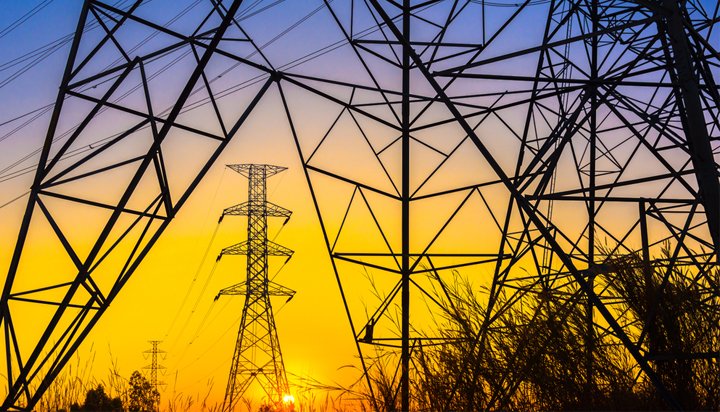To develop the powerful ITER Neutral Beam Injectors (NBIs) a test facility has been set up in Padua, Northern Italy, counting on the contributions of Fusion for Energy (F4E), ITER Organization (IO), India, Japan, and Consorzio RFX. Together they have agreed to collaborate on two major experiments which will help us get closer to fusion energy. Scientists will have the opportunity to run tests using SPIDER and MITICA in order to acquire new know-how. Subsequently, the parties involved will proceed with the fabrication of the “real” components that will be used in ITER. Europe being the host of the ITER experiment is also one of the parties with significant involvement in the Neutral Beam Test Facility (NBTF). It has been financially contributing to its construction and the manufacturing of components. In terms of Research & Development (R&D), F4E has invested approximately 30 million EUR for the period 2012-2019 and roughly 100 million EUR for production of components. Converting the NBTF into a centre of excellence for future research in fusion is of strategic importance for Europe. Much will depend on access of know-how and expertise to harness fusion, the energy of Sun. The components of SPIDER, the most powerful negative ion source in the world, and those of MITICA, the real-size NBI, will need to be cooled down. The function of the water cooling plant will be to remove the deposited thermal power, up to a total of about 70 MW, for 3600 seconds. The cooling plant consists of the following main units: a specific system for each of the two experiments, and a common system which they share to release the thermal energy removed from the components. F4E, in close collaboration with Delta Ti Impianti, the company responsible for its production (from design to commissioning), has successfully completed the works. After eight years the system has been handed over to ITER Organization on 28 May. The pipes which extend to around 5500 m crosscut the entire Neutral Beam Test Facility. In some areas the pipes follow a neat pattern almost like tapestry covering the walls. In other parts of the building, the pipes resemble to a labyrinth made of steel full of twists and turns. This is the result of about 500 deliverable documents, reviews and inspections, contract amendments and successful negotiations. A team of engineers, quality assurance experts, lawyers, procurement officers have been working together for years to complete this project. We spoke to some of the engineers involved in the project to understand the challenges they faced during the lifecycle of the project. Vincent Pilard, F4E Technical Officer who has been closely following the contract, offers some background. “One of the main difficulties we faced designing the cooling plant was the fact that the building was not constructed. We had to imagine the space distribution, walls and partitions to project the installation of the pipes and of equipment. Our design had to adapt to the civil engineering works and eventually fine-tune all inputs so that our supplier could start manufacturing. There were also some key technical details that we had to take into consideration. For example, we need to use water with very low electrical conductivity in order to avoid impurities in the system. Therefore, we had to make provisions for a chemical control unit to filter the activated corrosion products.” Andrea Garbuglia, F4E on-site supervisor, elaborates on the complexity of the cooling plant.” The system has a thermal power of 70 MW, more than 5.5 km of piping, at least 2000 sensors/instruments installed, 10 primary circuits and more than 20 components to be cooled. The most challenging part, in terms of Health & Safety, logistics and technical coordination, has been the installation, and testing, of the MITICA cooling plant carried out in parallel with the SPIDER experiment in operation. In terms of construction, we have counted more than 6000 person days for the plant erection without any accident in six years putting safety first. The valuable contributions of Consorzio RFX, Delta-Ti Impianti and the F4E Neutral Beam cooling team have made this possible.” Giorgio Biginelli, CEO of Delta-Ti Impianti, shares some thoughts on their involvement in this project. “The cooling plant of the ITER NBTF was for us a great opportunity to showcase reliability, competence and innovation. Being part of a global R&D project, on which the future of humanity’s energy will depend on the coming centuries, has given constant motivation to our workforce. The spirit of collaboration with F4E and Consorzio RFX helped us to complete successfully the work. We have acquired important know-how, fundamental to creating synergies with other projects such as ITER, laboratories such as CERN, with which we already cooperate, and others we hope to be able to cooperate with such as DTT.” “The NBTF cooling plant is one of the prerequisites for the start of MITICA’s operation. The plant has already demonstrated its conformity to the cooling needs of ongoing SPIDER experiments. During the construction of this plant, the supplier, F4E, Consorzio RFX and ITER Organizaion have worked together successfully to overcome the difficulties that have been posed by the complexity of the size and the number of parties involved. The NBTF cooling plant is now ready to be used in its full capacity,” explains Chandramouli Rotti, ITER Organization Section Leader of the Neutral Beam Section “During the finalisation of the ITER NBTF cooling plant, a fruitful and strong cooperation was established between IO, F4E, Consorzio RFX and the industry. This equipment is essential for the operation of both SPIDER and MITICA. A continuous and intense effort has been put by all the parties during the lifecycle of the project- from conceptual design till final acceptance tests. In May 2018 the successful delivery of the first units of the cooling plant made it possible for the SPIDER experiments to begin. In September the entire cooling system will be fully operational to go ahead with MITICA experiments,” says Dr. Eng. Pierluigi Zaccaria – Project Leader for NBTF Thermomechanical plants and components.













